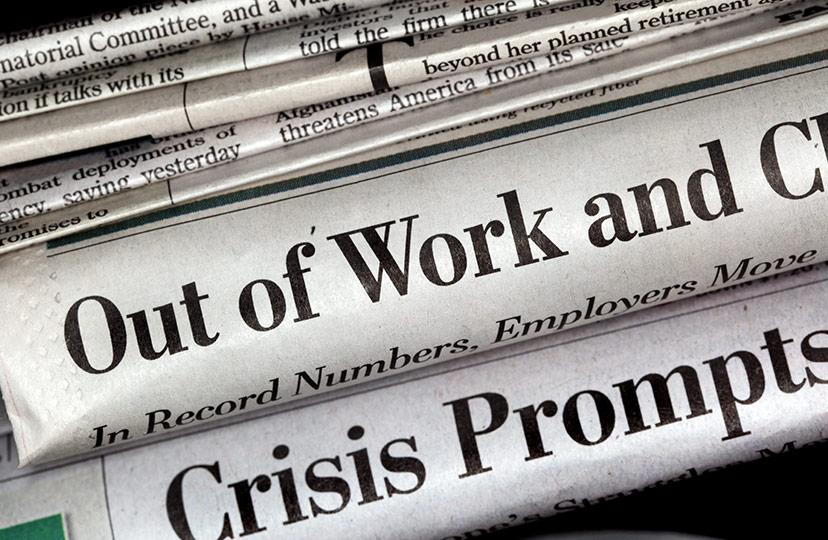Where the Vulnerable Jobs Are in U.S. Cities
A new tool from Brookings' researchers provides a snapshot of the low-wage/no benefits job market in 380 cities and all 50 states to guide public and private sectors in rebuilding.

This article originally appeared on The Mastercard Center for Inclusive Growth
The crux: As COVID-19 disrupts local economies, cities and states are assessing the impact on workers and strategizing how to rebuild more equitably. Minimizing the number of low-wage, no-benefits jobs will be a priority. A new tool can help.
Visualizing Vulnerable Jobs Across America is a new, interactive tool to help local planners better understand the extent of and where vulnerable jobs concentrate in their city or state. Developed by researchers at the Brookings Institution’s Workforce of the Future initiative, “this straight-forward diagnostic tool takes the temperature of a local economy, but the story behind each place is its own world,” said Marcela Escobari, senior fellow and head of the Workforce for the Future initiative.
The context: Millions of Americans are still out of work due to the COVID-19 crisis. In any employment crisis, the jobs most vulnerable to layoffs and economic fallout are low-wage jobs with no health benefits. Nationally, roughly one in five jobs is “vulnerable.”
Key takeaway: Industry mix matters to the resilience of a city’s labor market. Identifying where vulnerable jobs cluster can help public- and private-sector leaders collaborate to create a better mix with more paths for upward mobility.
Data insights from the tool
McAllen’s reliance on health services makes it vulnerable: Among the 380 cities in the interactive tool, McAllen, TX has the highest share of vulnerable jobs at 33.8 percent. Contributing to that ranking is McAllen’s healthcare sector, which spun off a market for home health aides, a profession with low wages and no benefits. Approximately half of McAllen’s low-wage workers are in healthcare. Nationwide, healthcare, which employs more Americans than any other sector, is the third-largest source of vulnerable jobs. While essential hospital staff worked overtime tending to COVID-19 patients, the rest of the health system ground to a halt as doctors and dentist offices closed or scaled back, hospitals canceled elective surgeries and the growing ranks of uninsured cut into health systems’ bottom lines. According to the Bureau of Labor Statistics, employment in healthcare is down by 797,000 jobs since February.
Hospitality and retail are also vulnerable sectors: For example, Myrtle Beach’s economy is concentrated in the hospitality and retail sectors, with the two employing nearly 40 percent of local workers (nationally the two compose 20 percent of workers). The concentration makes the city the 15th most vulnerable in the country.
Yet, as the charts below show, policy and industry mix can help cities weather a storm. Las Vegas may be the capital of the hospitality industry with its hotels and casinos, yet its strong unions and labor protections have shielded workers from the worst COVID-19 fallout relative to other tourism-reliant economies and national averages. While the sector’s reopening will still be turbulent, these arrangements may help provide a safety net to support workers’ long-term health and employment prospects, said Escobari.
Even with a more varied mix of sectors, cities have unique distinctions: In a more typical city like Elmira, NY, 19.3 percent of local jobs are low wage and lack benefits. Elmira falls right in the middle of the 380 cities on vulnerability. “So in that sense, it’s about average,” said Ian Seyal, project manager and research analyst at Brookings. “Except if you look at real estate; there, the share of vulnerable workers is twice as high as national averages.”“Maybe the best outcome of this tool is that someone who knows their own place discovers something they don’t know,” said Seyal.
For any city, turning the ship to make its economy less vulnerable will take a strong collaborative approach with dynamic and creative public-private partnerships, Escobari said. Creative approaches might include employee-sharing, internal promotion pathways and providing portable benefits that follow the worker instead of being tied to an employer. If one industry is reducing staff while another is hiring, “can the two get together and swap employees?” Escobari suggested. Doing so would require that state and localities reduce current restrictions and red tape, but this moment of crisis creates opportunities for trust-building and dramatic, bold action, she said. “This tool can help in that. Low-wage jobs will always exist, but if government and business can collaborate to secure minimum protections for workers and reduce vulnerability, they will make society more resilient.”
The last word: Every economy will have vulnerable jobs. City and industry leaders and employees can create protections and ladders up to better jobs. As firms like QuikTrip, Trader Joe’s, and Costco have shown, investing in workers is profitable. In times of crisis, public and private sectors can work hand in hand to improve job quality and worker mobility.
Check out more content from the Mastercard Center for Inclusive Growth

